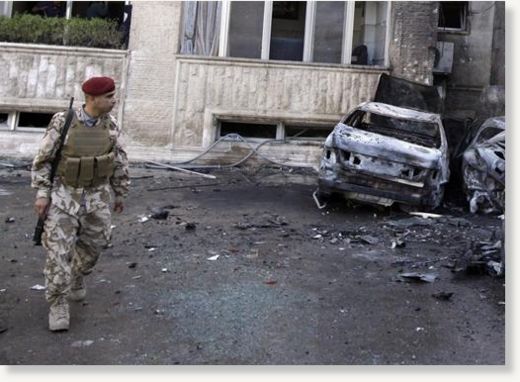
Gunmen wearing explosives belts under military uniforms charged into the provincial council building in Tikrit, north of Baghdad, Tuesday afternoon, shooting hostages execution-style, and spraying bullets and grenades throughout the building during the five-hour standoff.
Dr. Raied Ibrahim, the health director for Salahuddin province where the attack took place, said 57 people have so far been counted dead and 98 wounded.
Funeral processions on Wednesday crisscrossed the nearby city of Samarra, where officials said many of the victims lived, while those from Tikrit, 80 miles (130 kilometres) north of Baghdad, had mostly already been buried.
Prime Minister Nouri al-Maliki said he would launch an investigation into how the government compound could so easily be overrun by insurgents.
"Such crimes will not deter our people and security forces from chasing and eliminating them," al-Maliki said. "The criminals who planned and carried out this crime will not escape punishment."
The U.S. Embassy in Baghdad called the siege a "horrific act."
"This attack demonstrates yet again that violent extremists are determined to undermine the stability, sovereignty, and self-reliance of a democratic Iraq," the Embassy said in a statement.
No group yet has claimed responsibility for the strike. But Iraqi officials were quick to blame al-Qaida in Iraq for the slaughter, noting that execution-style killings and suicide bombers are hallmarks of the extremist group.
Source: The Canadian Press



Reader Comments
to our Newsletter